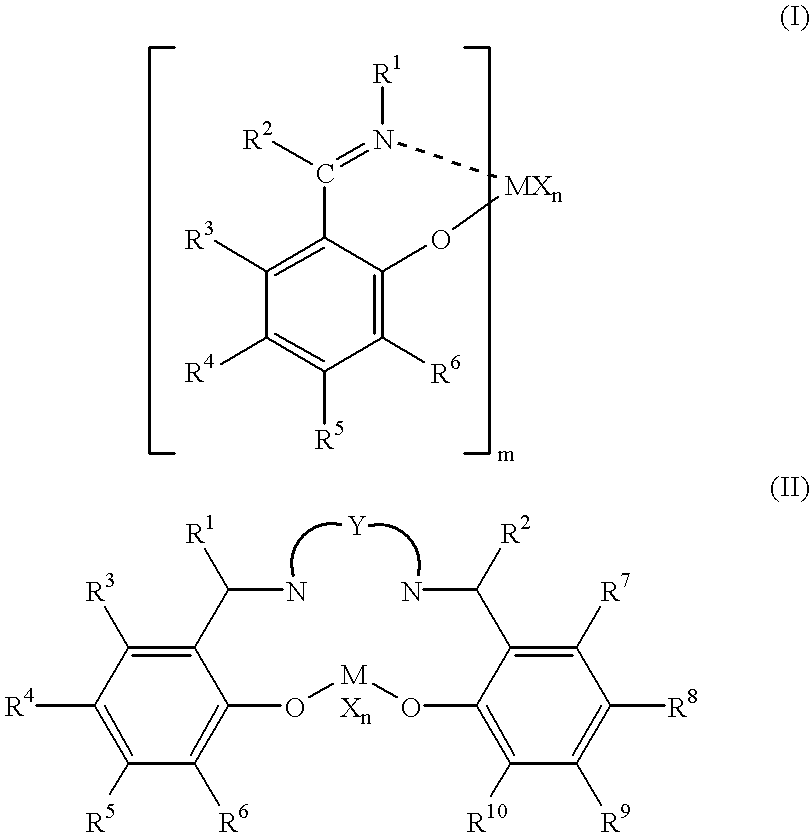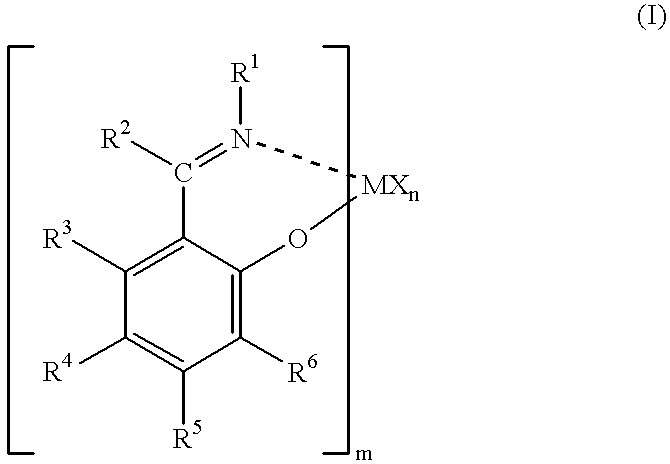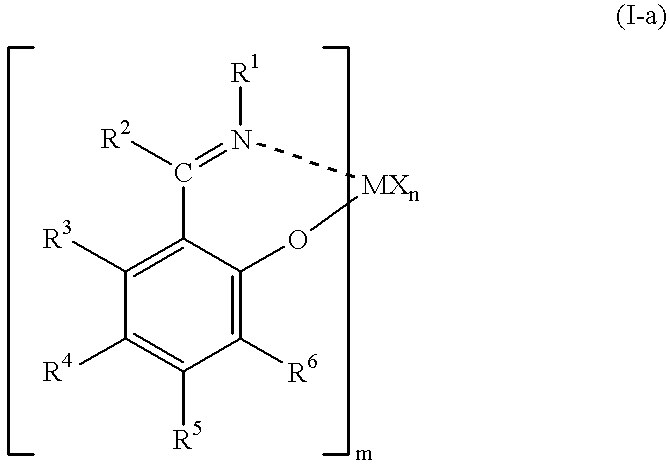Olefin polymerization catalysts, transition metal compounds, processes for olefin polymerization, and alpha-olefin/conjugated diene copolymers
a technology of conjugated diene and polymerization catalyst, which is applied in the direction of group 5/15 element organic compounds, group 4/14 element organic compounds, silicon organic compounds, etc., can solve the problems of low reactivity, low activity, and high cost of non-conjugated dienes used in copolymerization, and achieve excellent olefin polymerization activities
- Summary
- Abstract
- Description
- Claims
- Application Information
AI Technical Summary
Benefits of technology
Problems solved by technology
Method used
Image
Examples
synthesis example 2
[0602] Synthesis Example 2
[0603] Synthesis of compound B-1
[0604] To a 200 ml reactor thoroughly dried and purged with argon, 1.53 g (6.04 mmol) of compound L1 and 60 ml of tetrahydrofuran were introduced, and they were cooled to -78.degree. C. and stirred. After 4.1 ml of n-butyllithium (1.55 mmol / ml n-hexane solution, 6.34 mmol) was dropwise added over a period of 5 minutes, the temperature was slowly raised to room temperature, and stirring was continued at room temperature for 4 hours. To the reaction solution was added 10 ml of tetrahydrofuran, and the mixture was slowly added to a solution of 0.70 g of zirconium tetrachloride (purity: 99.9%, 3.02 mmol) in 30 ml of tetrahydrofuran which had been cooled to -78.degree. C. After the addition, the temperature was slowly raised to room temperature. The reaction solution was stirred for 2 hours at room temperature and then further stirred for another 4 hours under reflux.
[0605] The reaction solution was concentrated under reduced pres...
synthesis example 3
[0607] Synthesis Example 3
[0608] Synthesis of compound C-1
[0609] To a 100 ml reactor thoroughly dried and purged with argon, 0.66 g (2.60 mmol) of compound (L1) and 8 ml of diethyl ether were introduced, and they were cooled to -78.degree. C. and stirred. After 1.81 ml of n-butyllithium (1.55 mmol / ml n-hexane solution, 2.80 mmol) was dropwise added over a period of 5 minutes, the temperature was slowly raised to room temperature, and stirring was continued at room temperature for 2 hours. To the reaction solution was added 10 ml of tetrahydrofuran, and the mixture was slowly added to a solution of 0.385 g of hafnium tetrachloride (purity: 99.9%, 3.02 mmol) in 10 ml of tetrahydrofuran which had been cooled to -78.degree. C. After the addition, the temperature was slowly raised to room temperature. The reaction solution was stirred for 2 hours at room temperature and then further stirred for another 2 hours under heating at 50.degree. C.
[0610] The reaction solution was concentrated un...
synthesis example 4
[0612] Synthesis Example 4
[0613] Synthesis of compound D-1
[0614] To a 100 ml reactor thoroughly dried and purged with argon, 0.61 g (2.40 mmol) of compound (L1) and 10 ml of diethyl ether were introduced, and they were cooled to -78.degree. C. and stirred. After 1.61 ml of n-butyllithium (1.55 mmol / ml n-hexane solution, 2.50 mmol) was dropwise added over a period of 5 minutes, the temperature was slowly raised to room temperature, and stirring was continued at room temperature for 4 hours. The reaction solution was slowly added to a solution of 0.385 g of hafnium tetrachloride (purity: 99.9%, 3.02 mmol) in 10 ml of diethyl ether which had been cooled to -78.degree. C. After the addition, the temperature was slowly raised to room temperature, and the reaction solution was stirred for 4 hours at room temperature.
[0615] The reaction solution was concentrated under reduced pressure, and the solid precipitated was washed with 20 ml of methylene chloride and filtered with a glass filter t...
PUM
| Property | Measurement | Unit |
|---|---|---|
| Percent by mole | aaaaa | aaaaa |
| Percent by mole | aaaaa | aaaaa |
| Percent by mole | aaaaa | aaaaa |
Abstract
Description
Claims
Application Information
 Login to View More
Login to View More - R&D
- Intellectual Property
- Life Sciences
- Materials
- Tech Scout
- Unparalleled Data Quality
- Higher Quality Content
- 60% Fewer Hallucinations
Browse by: Latest US Patents, China's latest patents, Technical Efficacy Thesaurus, Application Domain, Technology Topic, Popular Technical Reports.
© 2025 PatSnap. All rights reserved.Legal|Privacy policy|Modern Slavery Act Transparency Statement|Sitemap|About US| Contact US: help@patsnap.com



